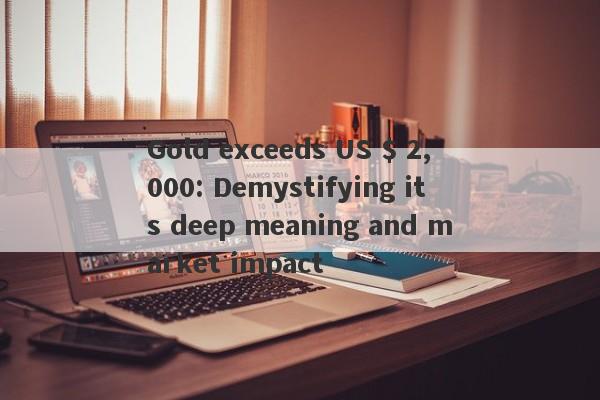Gold exceeds US $ 2,000: Demystifying its deep meaning and market impact
Gold price trend and global impact
The continuous rise in gold prices is a highly concerned topic, especially when it exceeds the key price of $ 2,000.Looking back at the past few years, the price of gold has been fluctuating and affected by many factors.Since 2019, as global economic growth has slowed down, trade tensions have intensified, and geopolitical risks have risen, investors' demand for insurance assets has continued to increase, which has promoted the rise in gold prices.
The rise in gold prices not only reflects the market's concerns about economic uncertainty, but also is closely related to monetary policy.The loose monetary policies and quantitative easing policies of many central banks, as well as the Fed's interest rate adjustment, have affected gold prices.In addition, the gold reserves of the central bank have also grown in recent years, which has also provided support for gold prices.
The importance of gold as a hedging asset
Gold as a hedging asset plays an important role when global economic uncertainty is increased.Its unique characteristics make it one of the preferred assets of investors when economic turmoil and political instability.Gold has the characteristics of scarcity, strong liquidity, and not affected by credit risk, so that it can maintain value or even value value when the market is turbulent.
When the global economy is facing risk of recession or intensified geopolitical tensions, investors tend to transfer funds to insurance assets such as gold.Because gold has a hedging attribute, it can be used as part of the asset portfolio to reduce the overall risk.In this case, gold prices often rise, reflecting investors' concerns about uncertainty.
Analysis of multiple factors of multiple factors that exceed $ 2,000 in gold prices
The price of gold exceeding 2,000 US dollars is not the result of a single factor, but a product of the common role of various factors.First, monetary policy is one of the important factors affecting the price of gold.The global central bank's currency easing policy and low interest rate environment have led investors to seek risk shelter, which has promoted the rise in gold prices.
Secondly, geopolitical risks are also one of the driving forces for rising gold prices.Incidents such as geopolitical tensions, trade wars, conflicts and other incidents around the world will cause investors' risk aversion and prompt them to buy security assets such as gold.
In addition, inflation expectations also have an important impact on gold prices.When investors expect inflation to rise, they tend to transfer funds to physical assets such as gold.
The global financial market's response to the rise in gold prices
When the price of gold exceeds US $ 2,000, major financial markets in the world will have a different degree of reaction.First of all, the stock market may fluctuate, especially those stocks that depend on economic growth and market risk preferences.Investors may transfer funds from the stock market to the assets such as gold, resulting in a decline in the stock market index.
Secondly, the foreign exchange market will also be affected.Generally speaking, when the price of gold rises, it usually means that the demand for risk aversion to the US dollar increases, which leads to weakening the US dollar.This may affect the exchange rate of the US dollar to other currencies, especially for those closely related to the US dollar
Gold exceeds the adjustment of the investment strategy of $ 2,000
Broken at $ 2,000 may trigger investors' re -evaluation and adjustment of their investment strategies.First of all, for investors who prefer stable investment and focus on asset allocation, they may consider increasing the proportion of insurance asset allocation, including gold and gold ETFs to cope with the risk of increasing global economic uncertainty.
Secondly, the reconstruction of the investment portfolio is also necessary.As the price of gold rises, the original allocation of assets may lose balance, so the assets need to be distributed to ensure the balance between the risk of the investment portfolio and the income.This may involve selling some high -risk assets and increase the allocation of hedge assets such as gold.
Different types of investors have different suggestions to deal with this situation.For long -term investors, they may adhere to the original





